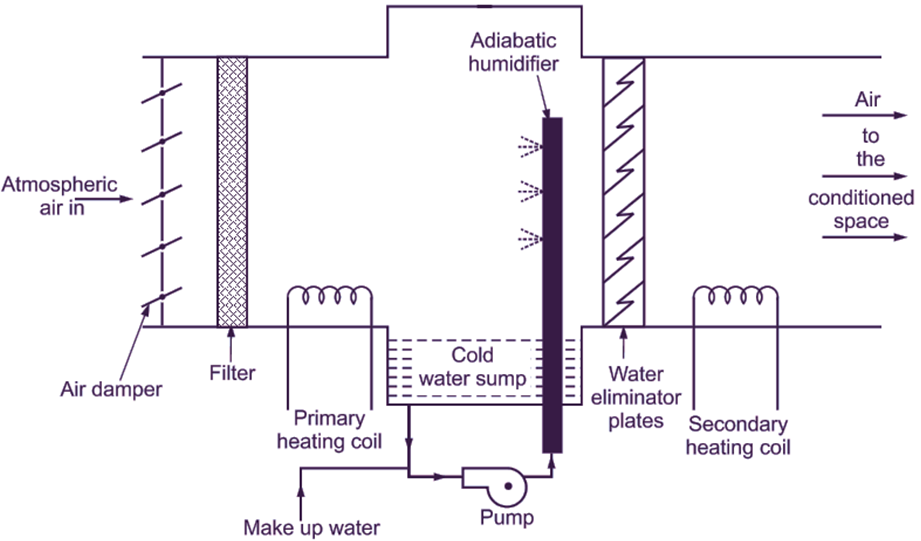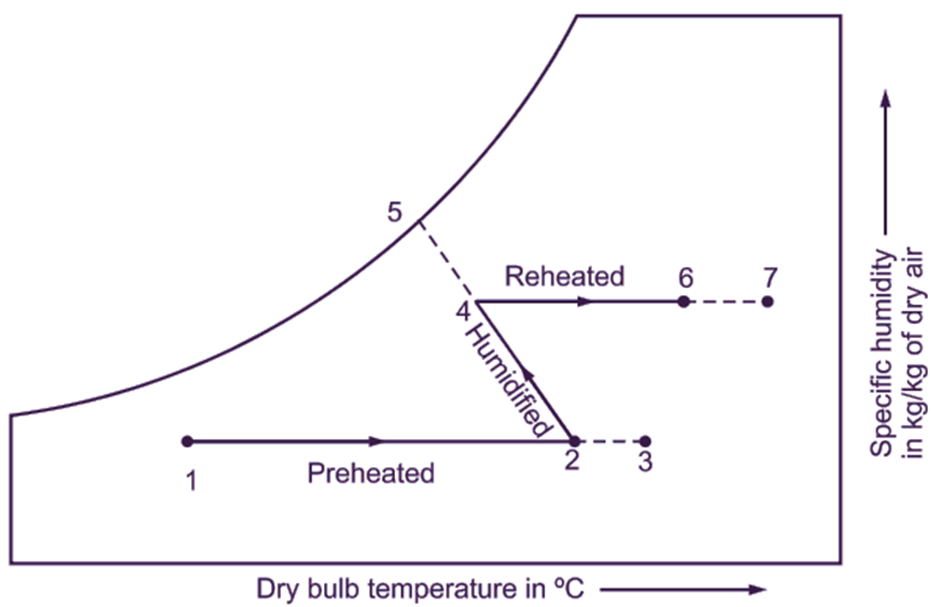In winter, the atmosphere is generally cool and humid, i.e. near to 15°C dry bulb temperature and 70
Construction of Winter Air Conditioning System
Winter air conditioning system consists of filter, primary heating coil, water eliminator and secondary heating coil (Figure 1).
Working of Winter Air Conditioning System
The air is first allowed to pass through a filter for cleaning and then over the primary heating coil. Due to high temperature of coil, the air temperature increases, but relative humidity decreases. In order to increase relative humidity, the air is passed through an adiabatic humidfier. Cold water having temperature ess than dry bulb temperature of air, but more than its dew point temperature is sprayed in the path of air. Thus, the air gets humidified. This humid air is passed through the water eliminator to remove water droplets from the conditioned air. However, due to this adiabatic humidification, temperature of air decreases. It is again increased up to required value by passing the air over secondary heating coil. This process is shown on psychrometric chart. Process 1-2 and 4-6 represents sensible heating, whereas, process 2-4 represents adiabatic humidification of air (Figure 2).

Fig. 1: Winter air conditioning system

Fig. 2: Representation of winter air conditioning on psychrometric chart